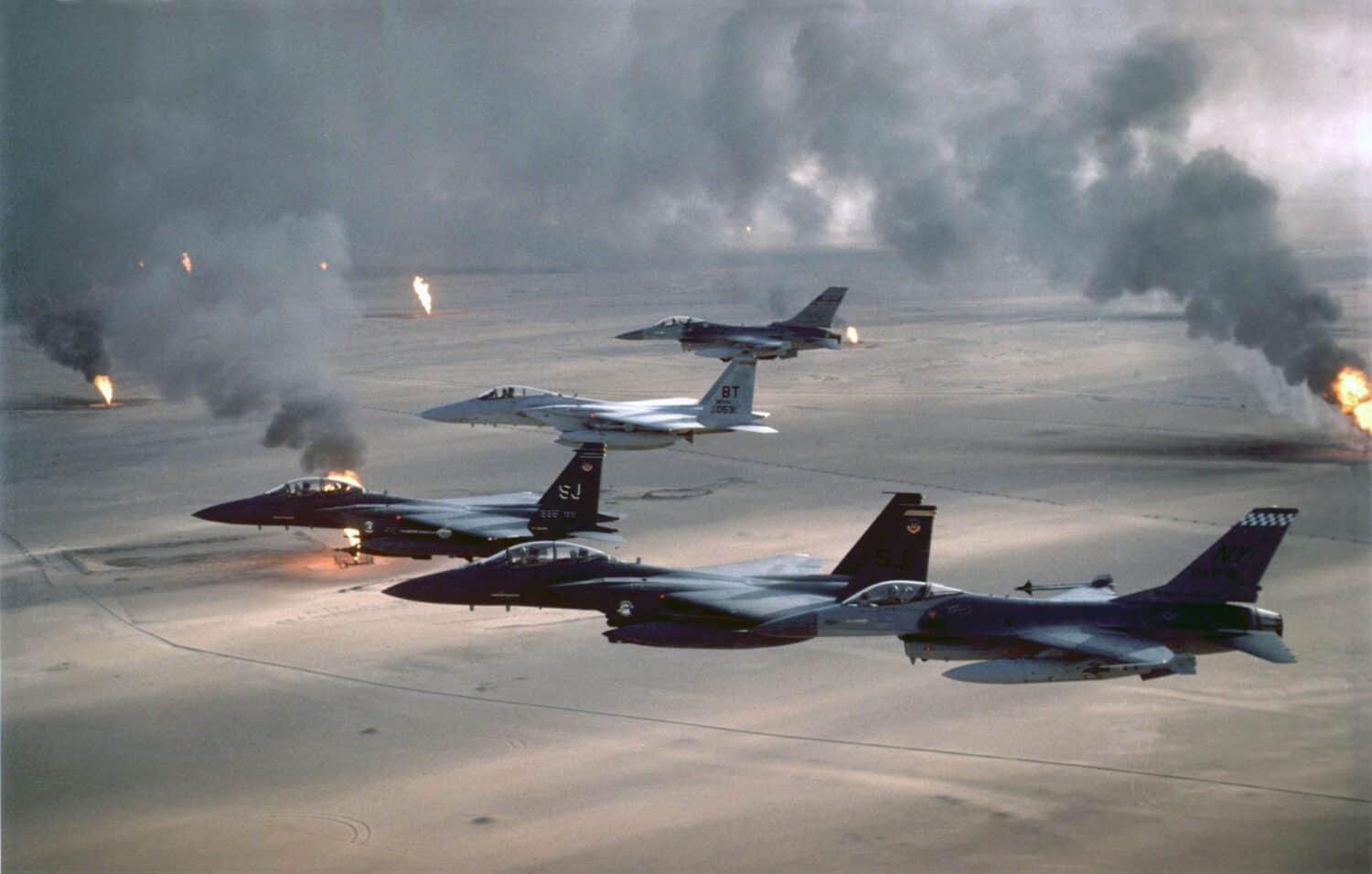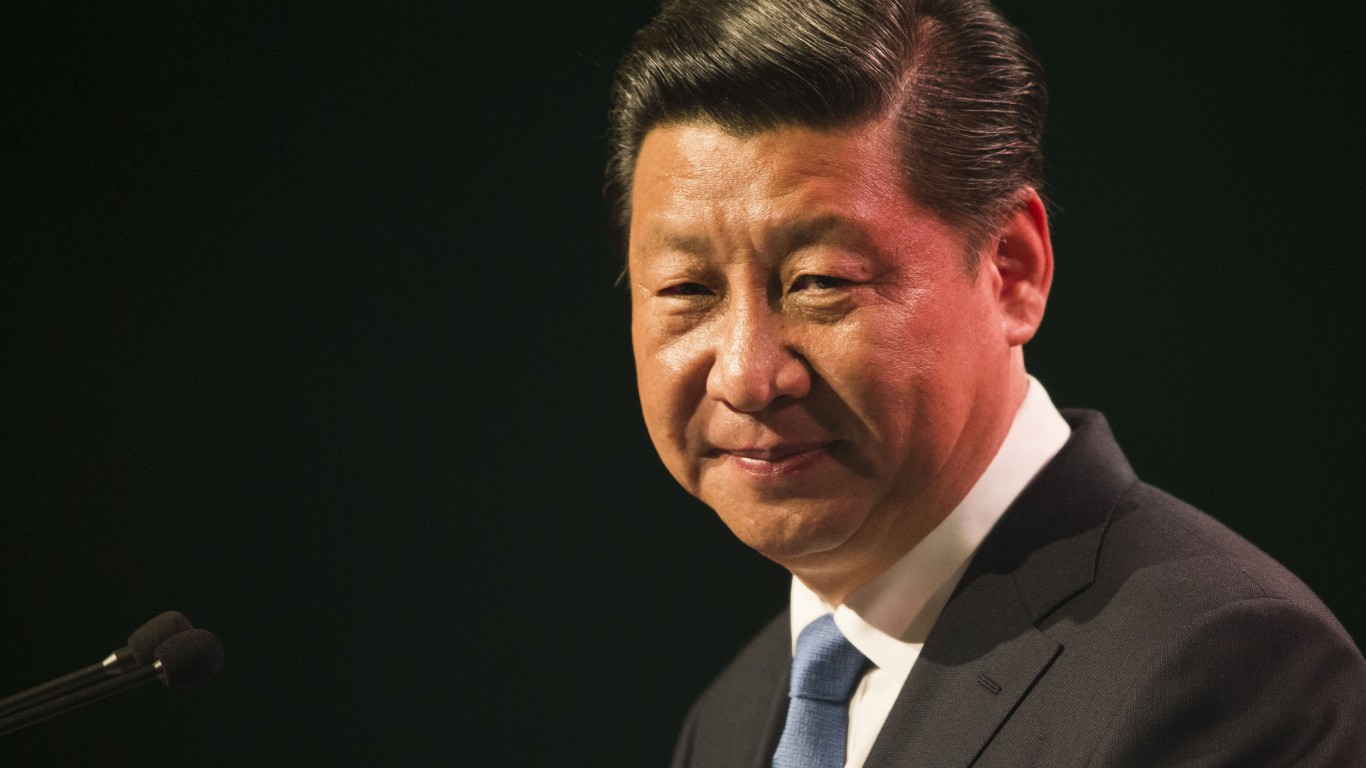
Founded in December 2019, the United States Space Force (USSF) is the newest branch of the United States military. The USSF is an offshoot of the United States Air Force (USAF); both branches are part of the United States Department of the Air Force. While they overlap in multiple areas, they differ in their overall purpose. This article will examine how the Space Force compares to the Air Force, where they converge, and where they differ.
Why This Matters

As the USSF nears its fifth anniversary, it is not as well established or understood as other military branches. Despite its relatively small size, the Space Force will have an increasingly important role in future security needs.
Early History

The US Air Force formally became a separate branch of the US military in 1947, two years after World War Two. In practical terms, the United States Army Air Force was already independent in all but name, the 1947 act formalized that change. The Space Force has followed a similar trajectory, emerging from the Air Force’s shadow.
The idea of “space superiority” predates the launch of the first American satellite, Explorer 1, in 1958. General Bernard Schriever oversaw the US military’s first space organization in 1954. The Western Development Division’s primary aim was developing intercontinental ballistic missiles under the command of the Air Force. Schriever spoke of the importance of space for national security a few months before the Soviet Union launched its first satellite in October 1957:
A word is necessary on the relationship between military need and scientific feasibility in space technology. In the long haul, our safety as a nation may depend upon our achieving “space superiority.” Several decades from now, the important battles may not be sea battles or air battles, but space battles, and we should be spending a certain fraction of our national resources to insure that we do not lag in obtaining space supremacy.
Schriever’s words proved to be prophetic. In 1960, an American U-2 spy plane was shot down and its pilot, Francis Gary Powers, was captured. The incident meant reconnaissance flights over the USSR were no longer viable for gathering intelligence. The United States developed satellites for military purposes in the 1960s and 1970s.
The ‘First Space War’ To Independence

In 1991 the Gulf War was described as the “first space war” as orbital assets were used for communications, navigation, and early missile warnings. The concept of a new, independent military branch was explored in a 2001 commission chaired by Donald Rumsfield.
The use of space in defense of U.S. interests may require the creation of a military department for space at some future date.
That “future date” came almost 20 years later under the Trump administration. While there were skeptics within the White House, there was also strong bipartisan support. The United States Space Force was created on December 20, 2019.
Purpose

The main priorities of the USAF are achieving and maintaining air superiority, the ability to respond rapidly to global conflicts, intelligence, and reconnaissance. Put simply, air superiority is a situation where one side has control of the skies and can carry out air strikes with little or no interference. Air superiority is critical to military success in the modern era. One of the reasons the war in Ukraine has dragged on for so long is that Russia has not managed to establish air superiority over Ukraine. Conversely, the United States has enjoyed air superiority in every conflict it has fought since the end of World War Two.
The Space Force overlaps with and compliments the Air Force’s intelligence and reconnaissance missions. The USSF has three primary objectives:
- Space superiority
- Global missions operations
- Assured space access
Space superiority isn’t quite the same as air superiority. In the context of the USSF’s mission, it means defending against space and counter-space threats. In other words, protecting American satellites against cyber attacks and denying adversaries the use of their space assets. For the USSF, ‘Global missions operations’ refer to securing the flow of information for the United States and its allies. This means making sure friendly forces can see, communicate, and navigate during military operations. Assured space access is deploying and sustaining assets in space and monitoring them around the clock. There are now over 25,000 orbital objects in space.
Budget, Personnel, and Organization

In its own words, the USSF is “lean and agile.” With 14,500 personnel, known as Guardians, the Space Force is the smallest branch of the US military. The USAF, by contrast, has over 320,000 active personnel. Their respective budgets are similarly lopsided, the USSF’s budget is $29.4 while the Air Force has a budget over six times larger. Accordingly, the Space Force relies on its self-described sister branch for support. The overlap between the two is also apparent in personnel.
The USSF has a rank structure similar to that of other branches with its own insignia, its motto “Sempra Supra” means “always above.” The Space Force’s first recruits came from other branches of the US military, particularly the Air Force, and direct recruitment. The commanding officer of the USSF, known as the Chief of Space Operations is B. Chase Saltzman, a former Air Force officer. His predecessor and the first Chief of Space Operations was John W. Raymond, another former USAF officer. Both the USSF and USAF are part of the Department of the Air Force and report to the Secretary of the Air Force, Frank Kendall.
Locations

Like all other US military branches, the USSF’s headquarters are in Washington DC. Domestically, the Space Force operates in 46 bases across 18 states. Internationally, it has 10 major sites worldwide including Greenland, Germany, Qatar, and the UK. The USAF has a more pronounced global presence with dozens of domestic and overseas air bases. Arguably, the bases situated in Guam, Japan, and South Korea are the most strategically important.
Rivals

Like the Air Force, the Space Force’s main adversaries on the world stage are China and Russia. Both nations have their own equivalents to the USSF. China has the People’s Liberation Army Aerospace Force (PLAASF), and Russia has the Russian Space Forces. China’s space force was established earlier this year as part of a major reorganization. As China seeks to develop a world-class military, Xi Jinping outlined the importance of space for China’s future ambitions and national security needs.
The United States has accused Russia of developing nuclear weapons for use in space, a charge the Kremlin denies. The impact of such an indiscriminate device would be catastrophic for the US economy and military intelligence. Using a nuclear weapon in the conventional sense is a last resort that would only be considered in the most extreme circumstances. Conversely, a space-based nuclear weapon could well be a first resort in any future conflict. There would be no human casualties but the damage would still be utterly devastating to the US and its allies.
Conclusion

The United States Space Force is the newest and smallest branch of the US military by quite a distance. The United States Air Force is far larger and has a budget over six times greater than its self-described sister branch. The Space Force’s journey from useful ancillary to independence mirrors the Air Force’s path away from the United States Army. There is some overlap between the two services and the US Air Force still provides support for the USSF. It will take time for the Space Force to develop its own identity and make its mark. With China and Russia investing in their own space forces, the prediction made by Bernard Schriever in 1957 has truly stood the test of time. In the coming years, the United States Space Force will likely have the opportunity to prove its worth.
It’s Your Money, Your Future—Own It (sponsor)
Retirement can be daunting, but it doesn’t need to be.
Imagine having an expert in your corner to help you with your financial goals. Someone to help you determine if you’re ahead, behind, or right on track. With SmartAsset, that’s not just a dream—it’s reality. This free tool connects you with pre-screened financial advisors who work in your best interests. It’s quick, it’s easy, so take the leap today and start planning smarter!
Don’t waste another minute; get started right here and help your retirement dreams become a retirement reality.
Thank you for reading! Have some feedback for us?
Contact the 24/7 Wall St. editorial team.
